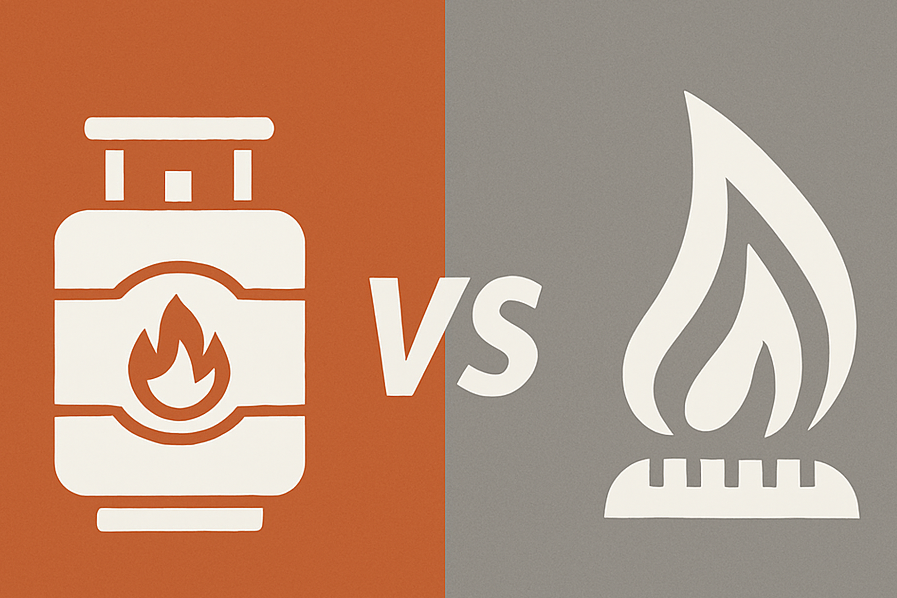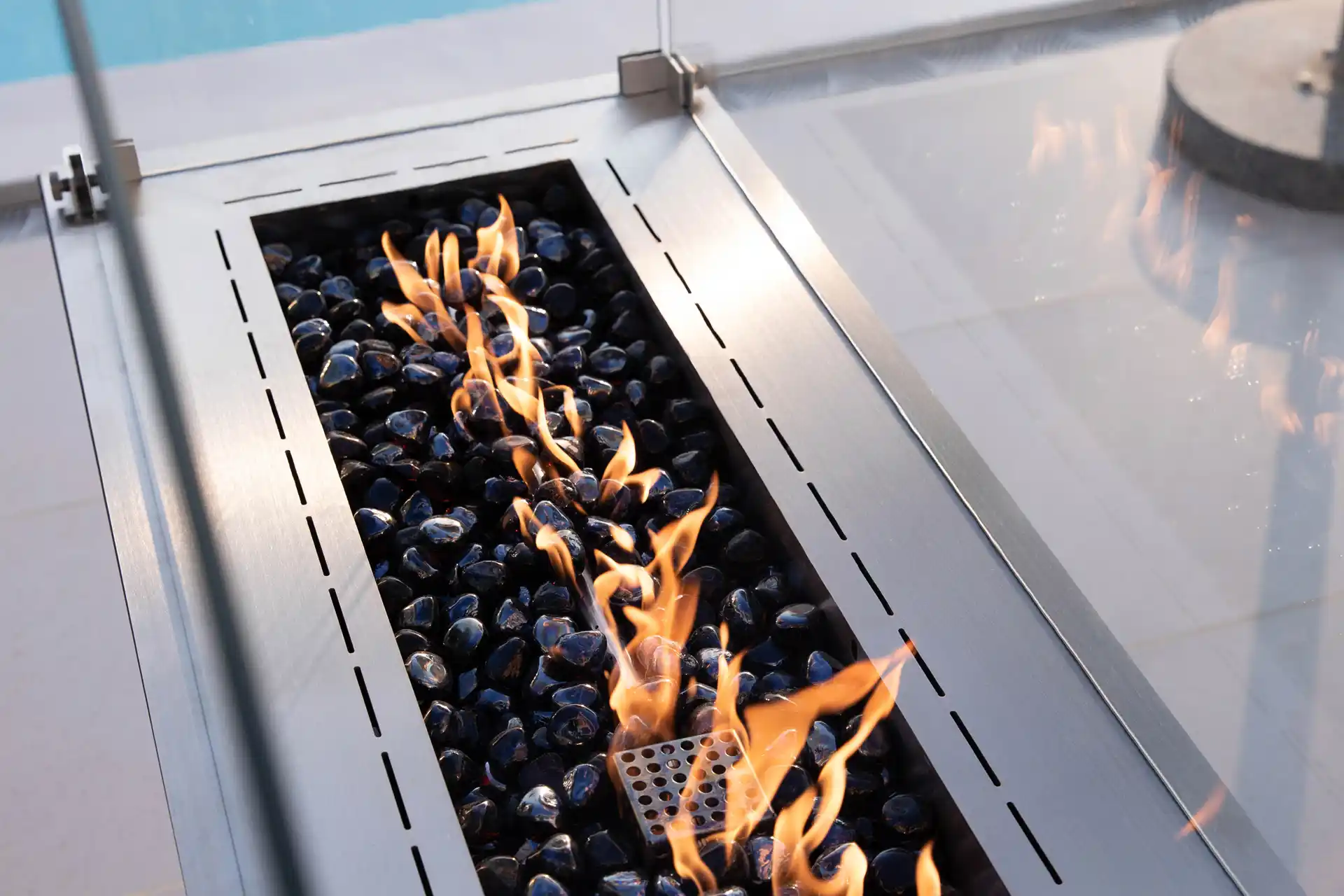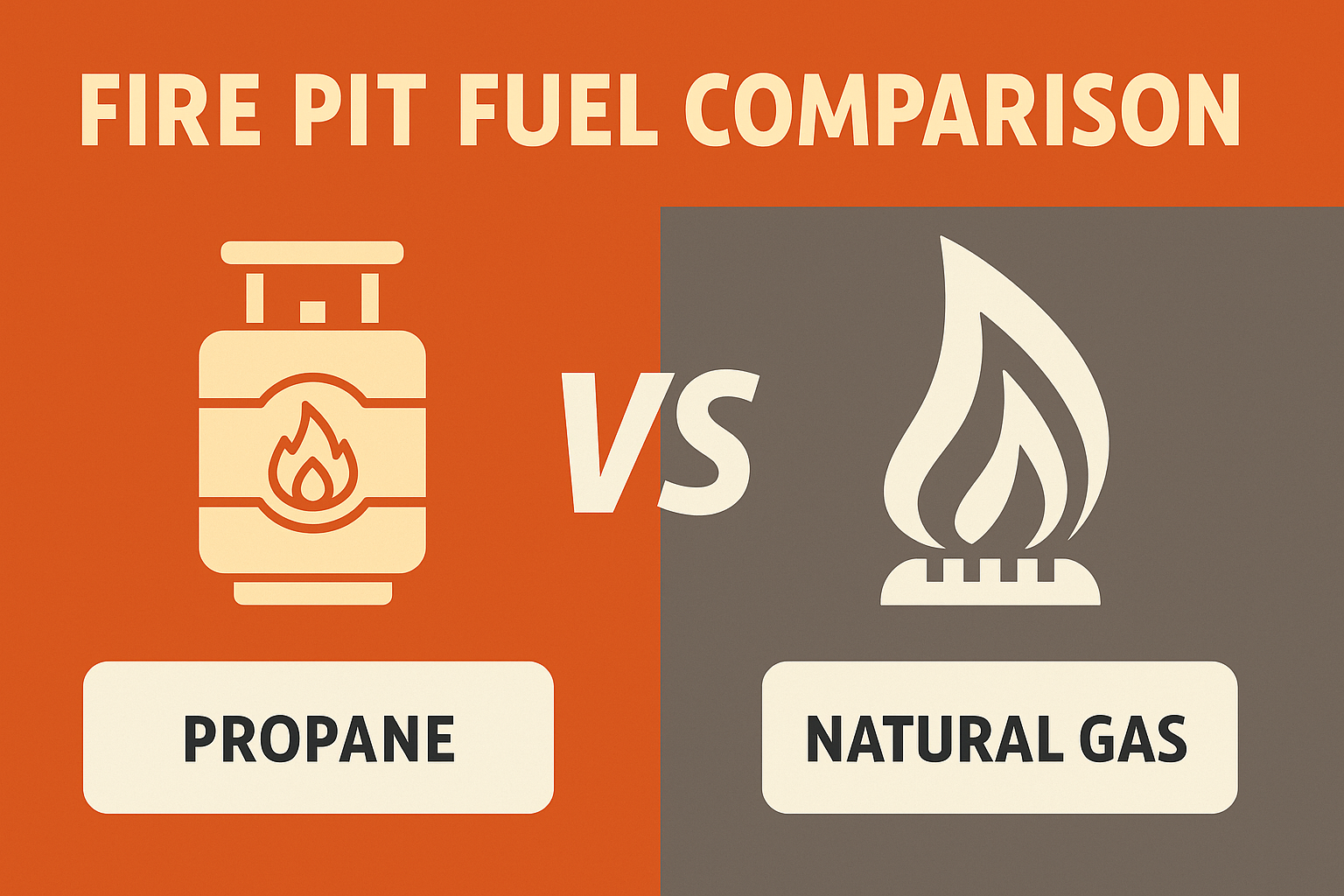Gas fireplaces are becoming increasingly popular in Europe – whether powered by propane or natural gas. Both variants offer even heat, clean operation and are significantly safer and more convenient than classic wood-burning fireplaces. But which solution is better suited to your home or patio?
1 How does a gas fireplace work?
Gas fireplaces are either connected to a propane gas cylinder or a fixed natural gas pipe. On propane models, the gas cylinder can be integrated in the housing or connected to the side. After opening the valve, the gas is fed through the burner and ignited. A controlled, clean flame is produced within a few seconds – perfect for gardens, balconies or restaurant terraces.
2 Difference between propane and natural gas

Although both gases fulfill similar functions, they differ in terms of installation, mobility, energy efficiency and environmental aspects. Below you will find the most important advantages and disadvantages of both systems.
3 Advantages and disadvantages of propane fireplaces
Advantages:
– Simple installation – plug in and go.
– Flame height and temperature can be individually adjusted.
– Mobile and flexible – ideal for balconies, patios or commercial outdoor areas.
– Higher calorific value (approx. 2,500 BTU per unit volume) than natural gas, therefore more efficient heat output.
– No smoke, no ash, hardly any maintenance.
– Usually cheaper to purchase than natural gas models.
Disadvantages:
– Regular replacement or refilling of the gas cylinder required.
– Smaller appliances may be less stable than permanently installed models.
– The gas pressure may drop at low outside temperatures.
– Propane cylinders must be stored in a ventilated, cool and upright position in accordance with EU safety standards (e.g. EN 1442).
4 Advantages and disadvantages of natural gas fireplaces
Advantages:
– Ideal for permanent installation – connection to the domestic gas network.
– Less expensive to run than propane, as no refilling is required.
– More environmentally friendly – clean combustion with lower CO₂ and CO emissions.
– Durable and low-maintenance, ideal for large gardens or hotel landscapes.
– In Germany, Austria and Switzerland, installation is carried out by certified specialist companies – maximum safety guaranteed.
Disadvantages:
– Higher installation costs due to the need to lay pipes.
– Fixed location, not mobile.
– Flame appears brighter, but less intense than with propane.
– Only possible if a gas connection is available.
5 Increasing the value of your home

A high-quality gas fireplace can increase the value of a property. Fixed natural gas installations in particular are increasingly appreciated in Europe as a high-quality feature for outdoor areas – both in detached houses and commercial properties.
6 Legal regulations and safety guidelines in Europe
Before you install a gas fireplace, you should be familiar with the local regulations:
– Appliances must comply with the European Gas Appliances Directive (EU 2016/426).
– Installation and operation should comply with the relevant standards such as DIN EN 449 or TRF.
– In apartment buildings or on balconies, the consent of the landlord or property management is required.
– Gas fireplaces may only be operated outdoors or in very well ventilated areas.
– Minimum distance to walls, plants or furniture: at least 1 m, recommended 2-3 m.
– Operation should be interrupted in strong winds or storms.
– Always close the gas valve after use.
The following also applies in the event of an insurance claim: check whether the use of a fireplace is covered by your household contents or liability insurance.
7 BTU and flame control
The unit BTU (British Thermal Unit) describes the heat output. The higher the BTU number, the stronger the flame. The air supply before combustion (primary air) influences the color and height of the flame: more air results in a blue, hotter flame; less air results in a yellow, higher flame with a softer light.
8 Safety tips for operation
– Check gas pipes and connections for leaks before each use.
– Always have a suitable fire extinguisher (powder or CO₂) to hand, never use water.
– Keep children and pets at least 1.5-2 m away.
– Close the gas valves completely when not in use.
– Have regular inspections carried out by qualified personnel.
– Use a protective cover or draft shield to avoid contamination.
9 Conclusion: Which fireplace is right for you?
Propane fireplaces are suitable if you prefer flexibility, easy handling and bright flames.
Natural gas fireplaces are ideal if you want a durable, low-maintenance and economical solution.
Both versions bring warmth, comfort and design to your outdoor area – whether for private gardens, hotel terraces or restaurants. The decisive factor is that the installation is carried out professionally and in accordance with European safety standards – for stylish and safe evenings outdoors.
Want to save time and make the best choice? Then be sure to read our blog about the best fireplaces to discover our recommendations for each model.










